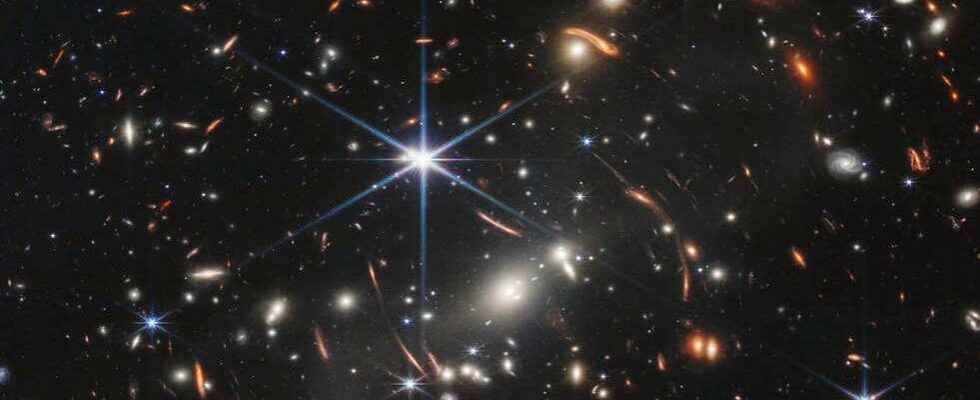Published: Less than 30 minutes ago
The most advanced telescope ever created has taken new images of the most distant parts of the universe.
The first image has now been released to the public.
“Some of the lights you see have been traveling for 13 billion years,” said NASA chief executive Nelson Nelson.
The James Webb Telescope has looked billions of years back in time and provided an initial supply of images.
The new telescope provides the “deepest picture of our universe ever taken,” according to Nasa, and at a press conference with US President Joe Biden and Vice President Kamala Harris, the first picture was released.
– You see galaxies that are shining and whose light has been bent, says NASA’s chief executive Bill Nelson.
Like a grain of sand
The image represents a spot in the sky that is about the size of a grain of sand held at arm’s length, Nelson explains. This small spot contains thousands of galaxies that were formed in the childhood of the universe, just after the big bang.
– A hundred years ago, we thought there was only one galaxy. Today we know that there are billions of galaxies with billions of stars, says Nelson.
– We will be able to answer questions that have not yet been formulated, he continues.
In addition to praising the telescope’s capabilities, President Joe Biden chose to emphasize the importance of the United States for space research.
“These images will remind the world that the United States can still be prominent,” the president said just before the first image was released.
Higher resolution
The James Webb telescope was launched on Christmas Day last year and about a month later it reached its destination in orbit in the solar system.
A stated goal is that it should look further back in time than man has so far succeeded in – and capture light from the first stars and galaxies that were formed and existed after the “big bang”, almost 13.8 billion years ago.
The telescope is powerful with observations in a much larger part of the infrared light spectrum than its predecessor Hubble. The resolution becomes higher, which makes it easier to see the starlight that has been “stretched out” to infrared wavelengths when the universe has expanded.
In the beginning, the telescope looked, among other things, at the huge Carina nebula, whose mysterious and light-year-long gas players have previously been captured by Hubble’s camera.
Facts
The James Webb Telescope
The James Webb Telescope is the successor to the successful Hubble Telescope, which delivered images farther into the universe than humans had ever seen.
It was launched from the space base in Kourou in French Guiana on Christmas Day 2021 and reached its destination in orbit in the solar system about a month later, after which the mirrors began to unfold.
The telescope’s main mirror measures 6.5 meters in diameter (Hubble 2.4 meters) and has a focal length (focal length) of 131.4 meters. It has a total exposure area of 25.4 square meters. All in all, it weighs 6.5 tons.
It provides an extremely detailed resolution, where you can observe objects corresponding to the size of a coin at a distance of four miles.
The goal is to be able to distinguish light from the very first galaxies that were formed in the universe and give a more detailed picture of these, to contribute to the understanding of how galaxies develop, how stars are born and die, and how planetary systems arise. In it, they hope for new findings about the Earth-like so-called exoplanets that exist – and in the long run about the origin of life.
The European Space Agency Esa, the US ditto Nasa and the Canadian CSA are collaborating on the space telescope. Researchers at Stockholm University, Chalmers and the Swedish company Spectrogon have partly developed the camera and spectrograph that the telescope takes pictures with.
There is also an antenna system on board that has been developed by Ruag Space in Gothenburg, for transmitting data to Earth.
The telescope was named after James E Webb, who was head of Nasa in the 1960s when the Apollo program was built.
Read more
